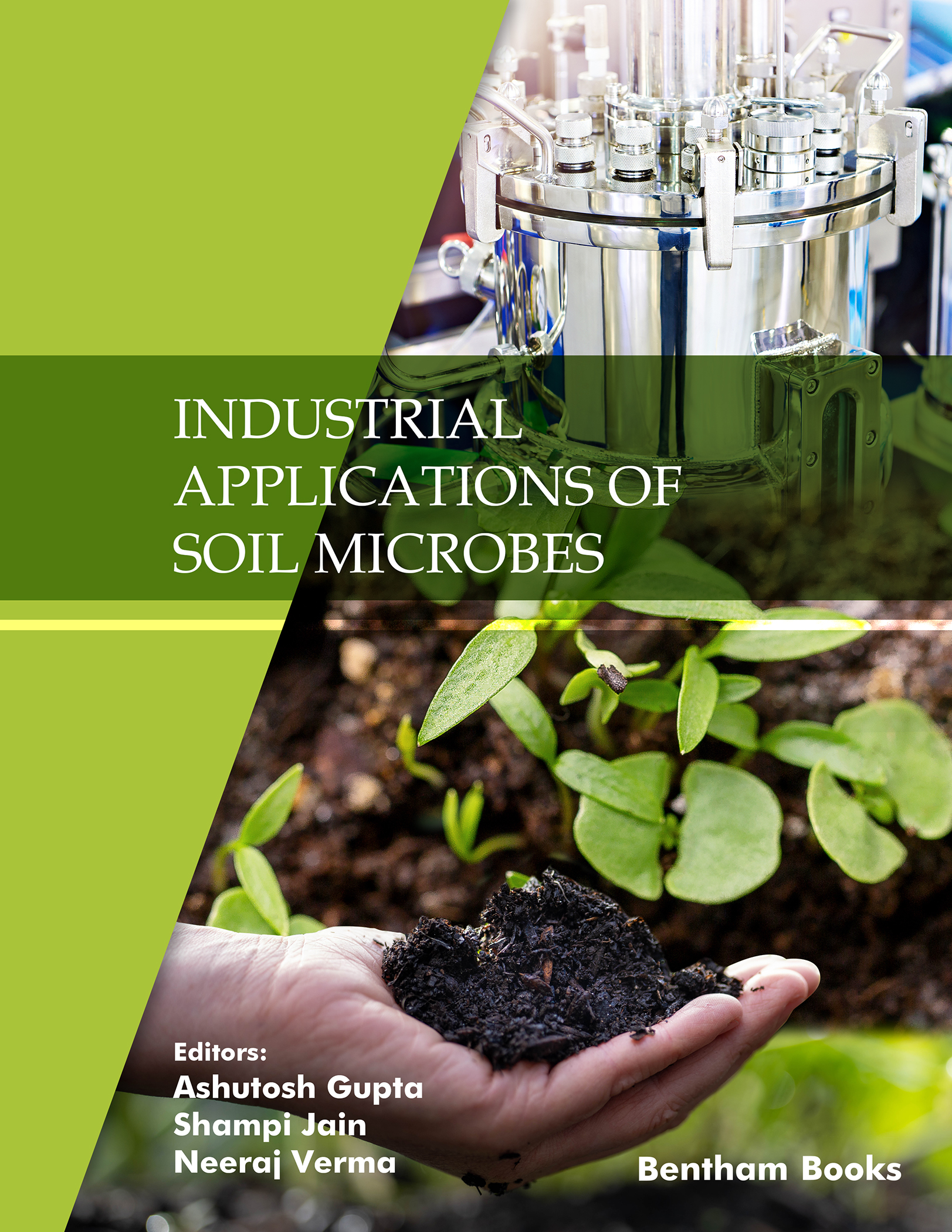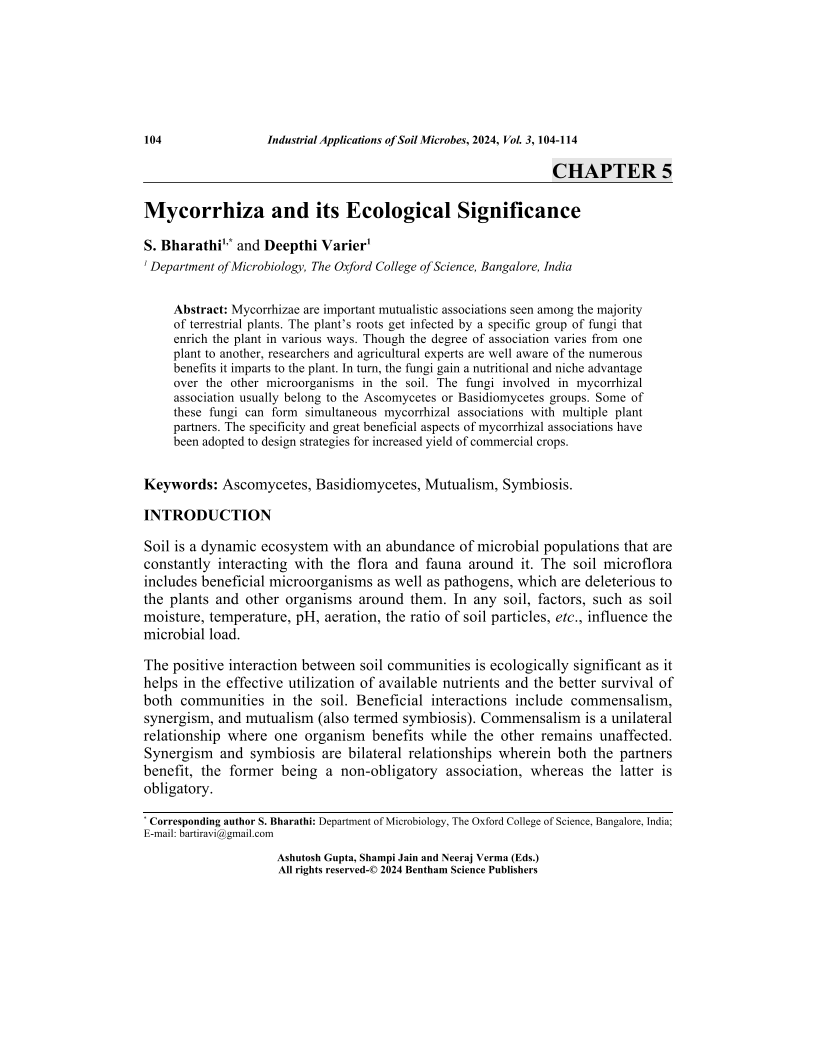Mycorrhiza and its Ecological Significance

- Authors: S. Bharathi1, Deepthi Varier2
-
View Affiliations Hide AffiliationsAffiliations: 1 Department of Microbiology, The Oxford College of Science, Bangalore, India 2 Department of Microbiology, The Oxford College of Science, Bangalore, India
- Source: Industrial Applications of Soil Microbes , pp 104-114
- Publication Date: April 2024
- Language: English
Mycorrhiza and its Ecological Significance, Page 1 of 1
< Previous page | Next page > /docserver/preview/fulltext/9789815079753/chapter-5-1.gif
Mycorrhizae are important mutualistic associations seen among the majority of terrestrial plants. The plants roots get infected by a specific group of fungi that enrich the plant in various ways. Though the degree of association varies from one plant to another, researchers and agricultural experts are well aware of the numerous benefits it imparts to the plant. In turn, the fungi gain a nutritional and niche advantage over the other microorganisms in the soil. The fungi involved in mycorrhizal association usually belong to the Ascomycetes or Basidiomycetes groups. Some of these fungi can form simultaneous mycorrhizal associations with multiple plant partners. The specificity and great beneficial aspects of mycorrhizal associations have been adopted to design strategies for increased yield of commercial crops.
-
From This Site
/content/books/9789815079753.chapter-5dcterms_subject,pub_keyword-contentType:Journal105

